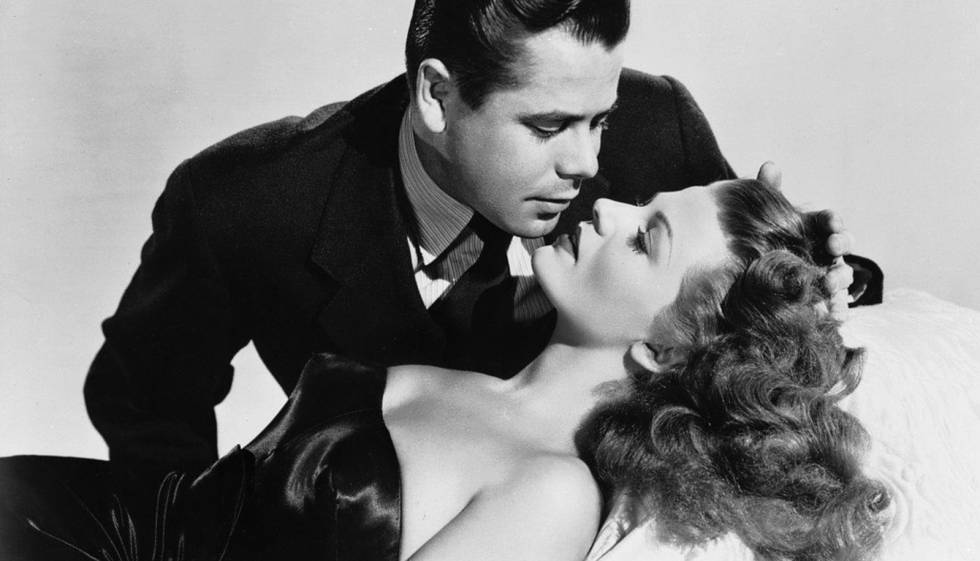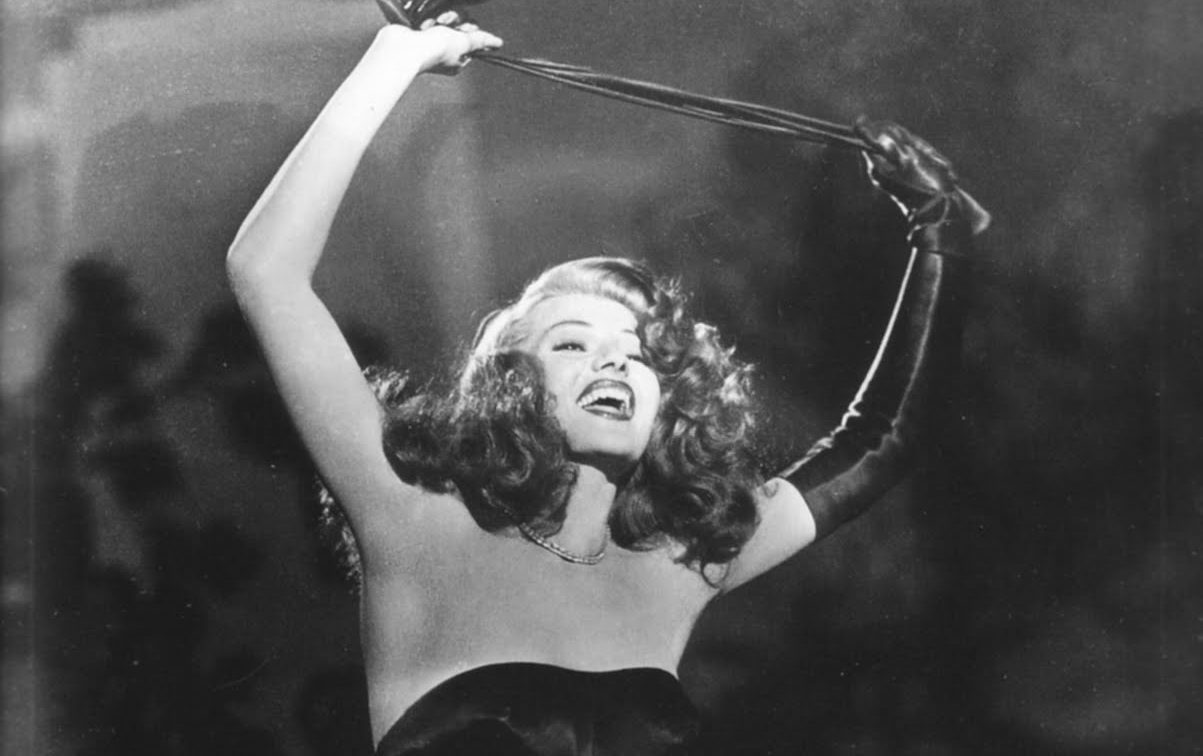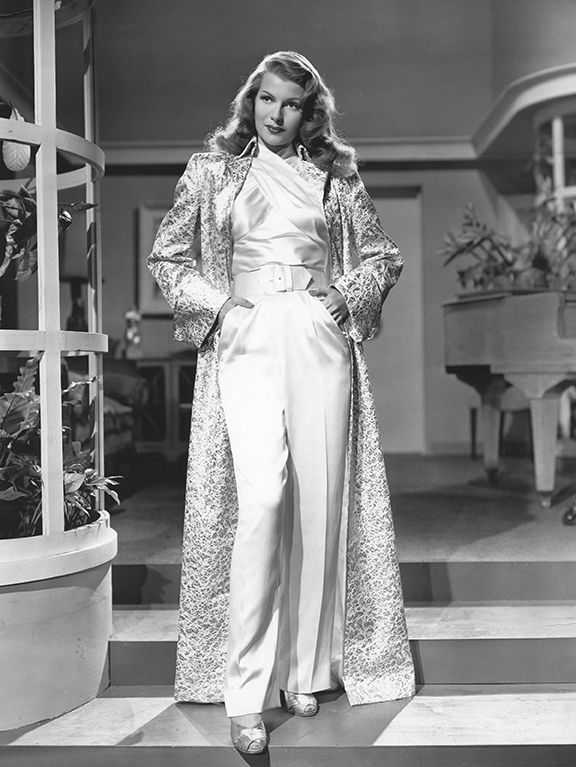Of all the enduring character entrances throughout cinematic history, none quite compare to Rita Hayworth’s first appearance in Gilda. Who could forget those consequential first moments, which elevated her to the status of Hollywood’s ‘Love Goddess?’ In diaphanous, off-the-shoulder negligée, she enters, exuding both innocence and charisma from the start. There is something truly exceptional to experience with each re-viewing of this classic as Rita herself would have turned 100 this past month. The complex character dynamics in Charles Vidor’s classic are so taut with chemistry that the film’s depths extend to its clothing, a distinct sartorial semiotics.
Rita is simply captivating as Gilda, a woman with a passionate and troubled history — a history shared with an itinerant gambler named Johnny Farrell (played by Glenn Ford). The plot unfolds after Gilda reunites with Johnny (unhappily) following her marriage to a wealthy casino owner. At first glance, this appears to be a somewhat prototypical Film Noir—a seductive woman lures the men around her into a complex and ultimately fatal web of lust, deception, and criminality. The film may be read this way, and several film critics and historians have done so, situating it narrowly within the visual and narrative conventions of the crime genre that dominated American cinema at the time. But, much as the film’s bewildering heroine, Gilda is not so easily defined.

Unlike the archetypal Film Noir, part of Gilda’s charm lies in its manner of obscuring the very notion of the femme fatale. Hayworth’s Gilda carries an air of audacity balanced with a deep insecurity around her affiliation with Johnny — an affiliation that leans more towards genuine passion than menace. French designer, Jean Louis, reveres this nuance, responding to Gilda’s evolving relationship with Johnny throughout the film. As each character maneuvers within the exhilarating love-hate triangle they’ve fallen victim to, it is fascinating to note how each costume manifests as its own personage. In observing Rita’s daring, sensual gowns — lavish silk, satin or metallic fabrics – notice their manner of echoing Gilda’s alterable motives and emotions.
In retrospect, it is when we see Gilda stripped to her purest emotional self, that the costumes are minimalistic and unadorned. When Gilda embodies her role as the seductress, however, she wears sequins and heavy jewels. The clothing serves as a lavish visual mirror to her inner psyche: Grecian-inspired gowns, an exquisite sparkling opera coat, and luxurious furs thrown over satin. In one of my favorite moments, Gilda even ‘re-launches’ herself as a nightclub singer, infamously singing ‘Amado Mio’ in a dramatic midriff bearing costume, complete with embroidered flowers, and an open, tie-up back.
While Gilda clearly evokes all the visual and narrative elements associated with Film Noir, it nevertheless inverts what is debatably Noir’s most definitive feature: the exploration of the threat that femininity poses to masculinity. Take Hayworth’s iconic performance of ‘Put the Blame on Mame.’ It is, after all, a song about a woman who is inevitably blamed for a number of natural disasters. And that is the essence of Gilda. It is the story of a woman who is forced to take the fall — who is forced and fetishized into the role of femme fatale. For this sequence, she wears a black satin sheath with a long side-slit down the side, paired with long black opera gloves meant to elevate the more erotic instants of the number. It is in this ironic performance that the film becomes an example of anti-Noir. For rather than portraying Gilda as a seducer or villain, Gilda casts a tangled net of intrigue and desire in which all actors are equally human and (in fact) equally “to blame.” Gilda’s allure renders the protagonist incapable of resisting her, but not incapable of punishing her. It is a punishment she endures out of love after Johnny marries and then deserts her once more.
Although the character of Gilda is famous for being the classic femme fatale, the film itself positions her as quite sympathetic throughout. She is a seductress, victim, and villain, but she’s also much more than that. And this empathy elevates the film’s significance to a commentary on misogyny – rather than being merely a misogynistic film. In the end, Gilda and Johnny acknowledge the mutual damage they’ve done to one another. There is no singular bad guy in Gilda, and so, as a story of corruption and ego, this film offers far more in complexity than many others of its genre — as evocative as it is visual.



 " alt="">
" alt="">